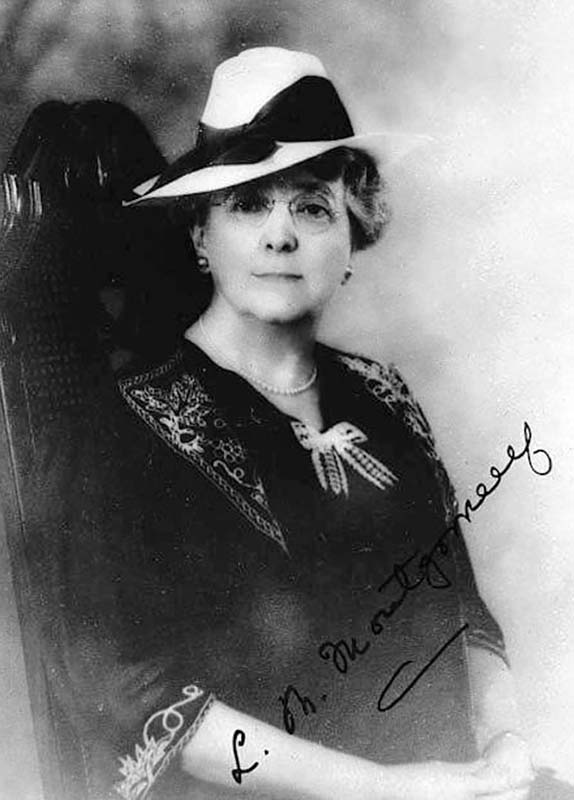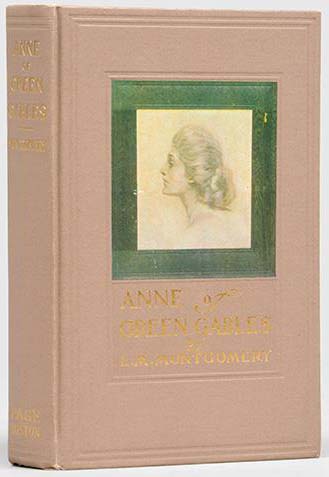Share via:
Montgomery, Lucy Maud – Canadian author, 1874-1942

Canadian author, 1874—1942. Born with what she called an itch for writing,” Lucy Maud Montgomery began her literary apprenticeship at a young age. Eleven when she started submitting manuscripts to magazines, she was fifteen when her first poem appeared in a small Canadian newspaper.
By age twenty-one she was earning her living in the thriving periodical market of turn-of-the- century North America. International acclaim came in 1908 with the publication of her first novel, Anne of Green Gables, which instantly became—and remains— a best seller. By the end of her life, Montgomery had produced twenty-three books of fiction, a short autobiography, and an estimated five hundred poems and five hundred stories written for popular magazines.
Selections from her ten volumes (more than five thousand pages, including photographs) of personal diaries, chronicling in compelling detail her life from 1889 to 1942, have also been edited and published. Writing served several purposes in Lucy Maud Montgomery’s life. She was raised in the small Prince Edward Island town of Cavendish by dour Scots-Presbyterian grandparents. They were ill equipped to handle a high-strung child, and as a young girl she channeled repressed energies into creating stories and poems.
She lived most vividly in the book worlds of Bunyan, Bulwer-Lytton, Sir Walter Scott, Lord AlfredTennyson, Jane Austen, and the Brontë sisters, writers whose influence is evident in her work. As an adult woman living with her widowed grandmother and, later; as the frustrated wife of a depressive Presbyterian minister, she again turned to writing as an outlet for pent-up emotion. A restorative process itself, writing also earned L.M. Montgomery accolades from a world literary community that too seldom honored its female members.

In 1923, she became the first Canadian woman to be appointed a member of the Royal Society of Great Britain; in 1935, she was made an officer of the Order of the British Empire and was selected for the Literary and Artistic Institute of France.
No less important to Lucy Maud Montgomery were the financial rewards of being a successful writer. She savored the social standing and legitimacy that money brought with it. Unwilling to jeopardize her status as a best-selling author, she produced what the market demanded: romantic stories with “happy endings” that were, perhaps simply because they were popular, often dismissed by the arbiters of literary taste as shallow formula fiction.
Were that an adequate assessment of L.M. Montgomery’s work, it would be difficult to explain her enduring popularity. Even more difficult to account for would be the profound, lasting effect her writing has had on readers of all ages, from countries as diverse as Canada and Japan, Poland and Sweden.
For example, one of Canada’s most celebrated writers, Alice Munro, speaks of the empowering model for female authorship she found in L.M. Montgomery’s autobiographical Emily of New Moon trilogy of novels. Interesting thematic comparisons have been drawn between Montgomery’s writings and those of Canadian Margaret Atwood. And Sweden’s Astrid Lindgren—whose own redheaded heroine, Pippi Longstocking, is beloved by readers worldwide— cites L.M. Montgomery as a powerful literary influence.
In part, what L.M. Montgomery’s readers respond to so deeply and with such emotion are the same things that elevate her writing above the sentimental fiction of other popular writers of her day: lively storytelling seasoned with equal parts realism, folklore, and Celtic mythology; a tart sense of humor and a deft comedic touch; and a richly detailed evocation of setting. All but two of her novels are set on Prince Edward Island, and the tiny Canadian province today counts L.M. Montgomery- inspired tourism among its major industries. The exceptions are The Blue Castle (1926) and Jane of Lantern Hill (1937), both set at least partly in Ontario, where Montgomery lived from 1911 until her death.

But there is energy of another type that animates Montgomery’s books, which retain a strong hold on adult readers. It is the energy of social critique, and it operates just below the surface of many of her novels. Anne and Emily, her two best-known and best-developed heroines, may fulfill their womanly duty by marrying the saccharine-sweet boy next door, hut not before each voices loud and angry criticisms of the way in which girls, orphans, and other disempowered members of society are ignored and trivialized.
In the later of the nine “Anne” books, the popular redhead capitulates to social convention and becomes the matronly, submissive Mrs. Gilbert Blythe. Out of the mouths of secondary, marginalized characters like Leslie Moore in Anne’s House of Dreams (1917), however, come caustic comments that subtly undercut the artificially blissful Blythe household.
Of course, not everything L.M. Montgomery published in her long, prolific career was entirely successful. Many of her short stories do not reward repeated readings, and her ear-pleasing poetry is little more than that. But recent critical reevaluation of L.M. Montgomery’s literary output, prompted largely by the publication of her journals, has reversed some earlier assessments of her work. For example, Rilla of Ingleside (1920), once considered a lesser light in the Montgomery canon, is now recognized as a valuable fictional account of the Canadian experience on the World War I home front, one of very few such records.
Much of the historical detail in Rilla of Ingleside is drawn from L.M. Montgomery’s long, anguished diary entries during the tumultuous war years. The impassioned tone of these entries is typical of the journals, which combine to form a lively and riveting narrative of a remarkable woman’s life. Uniquely valuable documents of social history, they provide crucial insight into the conditions of women’s lives during an era of radical social change. In writing and recording her own life, L.M. Montgomery created a character as engaging and memorable as Canada’s most famous fictional heroine, Anne of Green Gables.
Marie C. Campbell
Source: Children’s Books and their Creators, Anita Silvey.
Lucy Maud Montgomery Books
Anne of Green Gables series
- Anne of Green Gables (1908)
- Anne of Avonlea (1909)
- Chronicles of Avonlea (1912)
- Anne of the Island (1915)
- Anne of Windy Poplars (1936)
- Anne’s House of Dreams (1917)
- Anne of Ingleside (1939)
- Rainbow Valley (1919)
- Rilla of Ingleside (1921)
- The Blythes Are Quoted (2009) — was submitted to publisher the day of her death but not published in its entirety until sixty-seven years later.
Emily trilogy
- Emily of New Moon (1923)
- Emily Climbs (1925)
- Emily’s Quest (1927)
Pat of Silver Bush
- Pat of Silver Bush (1933)
- Mistress Pat (1935)
The Story Girl
- The Story Girl (1911)
- The Golden Road (1913)
Stand alone novels
- Kilmeny of the Orchard (1910)
- The Blue Castle (1926)
- Magic for Marigold (1929)
- A Tangled Web (1931)
- Jane of Lantern Hill (1937)
